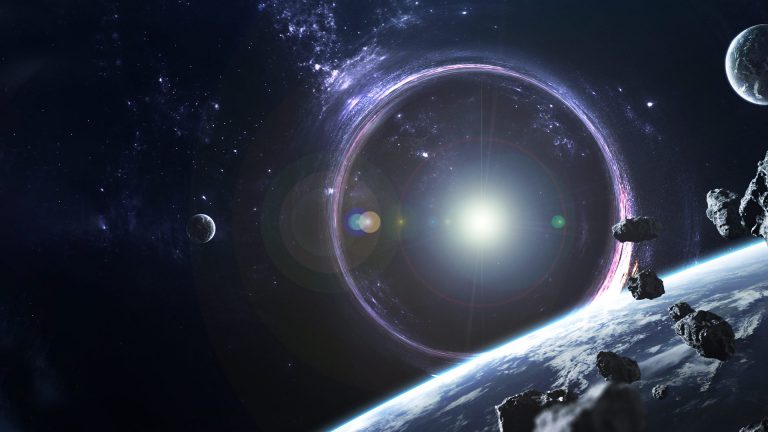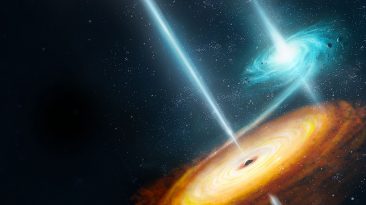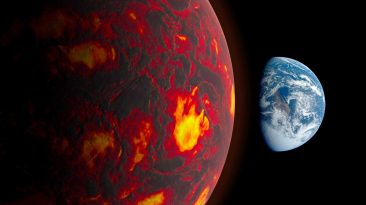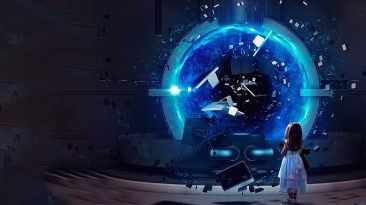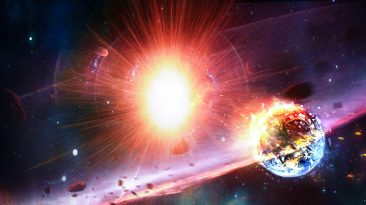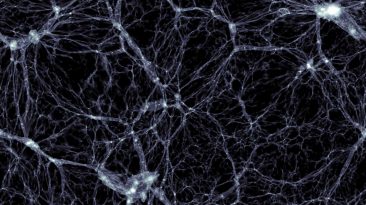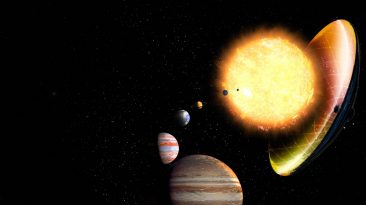This star is about to transform into a black hole. And we’re about to travel inside it to see what’s on the other side. The only problem is that we’ll never be able to report our findings back to Earth.
Because once you go inside a black hole, there’s no coming back. So maybe there’s a better way to find out what’s on the other side.
Could we use a special telescope? How would light behave inside a black hole? And why could the first image of a black hole provide all the answers?
Everything that we can see in the world around us is based on light entering our eyes. If an object doesn’t emit or reflect light, then our eyes can’t see it. So how are we supposed to see through to the other side of a black hole?
It’s like the darkest thing we’ve ever discovered. Not only does it not emit its own light, it also sucks up any light that comes near it. But, according to planetary scientist Joshua Colwell, seeing through a black hole is not impossible.
In fact, we’ve already done it. And all it took was a little bending of space and time.
Let’s take a look at the first real image of a black hole. Even in this low-quality picture, you can see through to the other side if you look close enough. Let’s enhance. If you want to see what’s going on on the other side of a black hole, the most crucial place to look at is this thin ring at its center.
This is called the photon orbit. It’s a ring made up of light particles called photons that have orbited the black hole two, three, or even more times before escaping. Photons can come closer to the black hole than ordinary matter because they are massless. And the crazy thing is that the photons we see in this ring don’t just come from the sides of the black hole. They also come from behind it. This is because the black hole can warp space and time to such a degree that some of the light orbits the black hole in a full circle.
Let me explain.
Imagine a star in space that, from our perspective, is obscured by a black hole. The star sends out light in all directions. Some of this light would usually reach our eyes on Earth, and some would just disappear in other directions. But in this case, the light that is headed straight for us would get sucked in by the black hole and disappear forever.
And some of the light that normally wouldn’t have reached us will get redirected by the black hole. This light would become a part of the photon orbit and eventually, make its way to our eyes on Earth. The light appears to come from the gaseous rim around the black hole, but it’s coming from behind it.
Now, I know this isn’t exactly what you were hoping for when you imagined seeing through a black hole. You want to know what it looks like inside, right? Well, to do that, we would need to travel past the event horizon, which is essentially the edge of a black hole. It’s the point from which nothing can escape, not matter or light.
So yeah we won’t be able to report our findings back to Earth, but maybe we just want to see it for ourselves anyway. After we pass the event horizon, we’ll arrive at something called a singularity. It can be described as a point in space where mass has infinite density. Everything that goes into a black hole will end up here, including all the light it’s sucked up.
Because you’ll be inside the black hole with the light, you will be able to see it, but its direction will be all mixed up. You would probably just see a uniform glow if you look away from the singularity and darkness if you look towards it.
Sources
- “What Exactly Is A Black Hole Event Horizon (And What Happens There)?“. Choi, Charles. 2019.Space.Com.
- “Black Hole: What Is A Black Hole? Could A Black Hole Swallow The Sun? What Is Inside One?“.Fish, Tom. 2019. Express.Co.Uk.
- “Messier 87: Virgo A | Messier Objects“. 2015. Messier Objects.
- “Singularities – Black Holes And Wormholes – The Physics Of The Universe“. 2020. Physicsoftheuniverse.Com.
- “Stellar Black Holes“. 2013. Www.Cfa.Harvard.Edu/.
- “What Is A Black Hole?“. 2020. NASA.
- “How To Make Sense Of The Black Hole Image, According To 2 Astrophysicists“. 2019. Vox.


